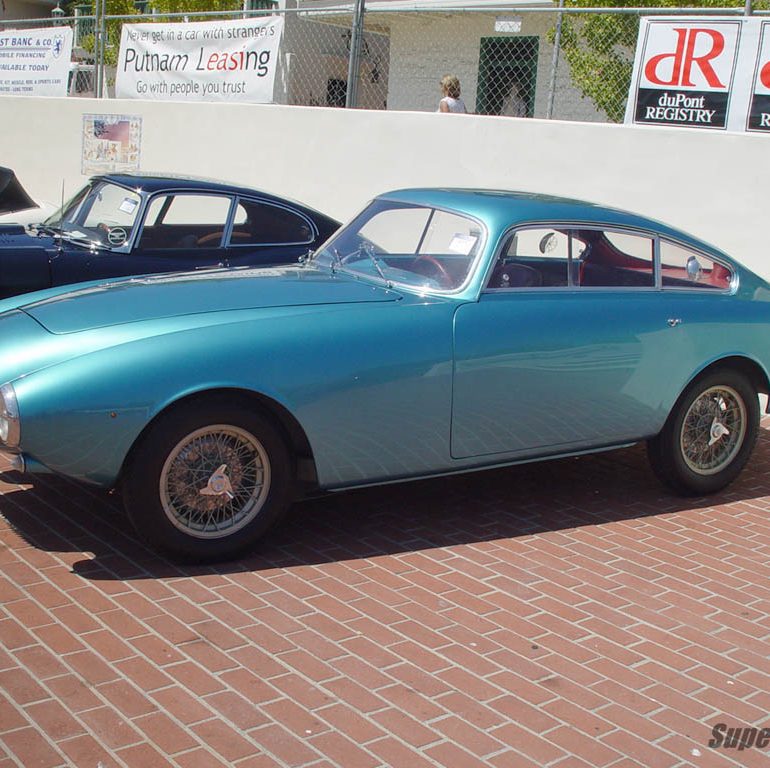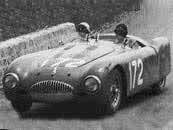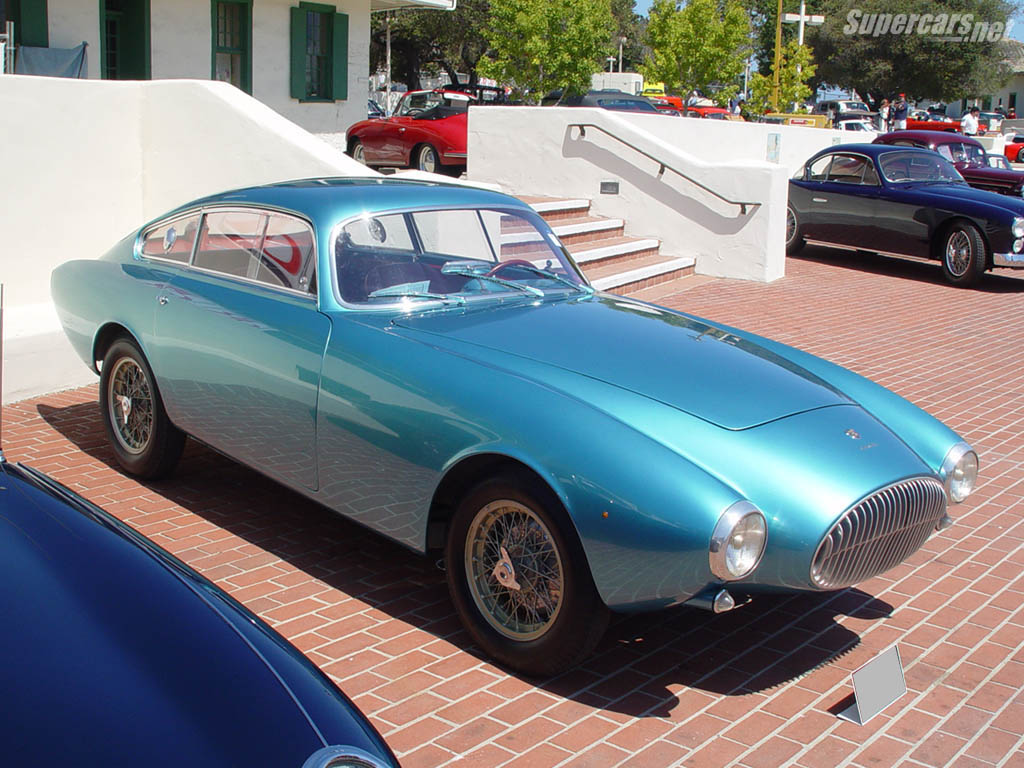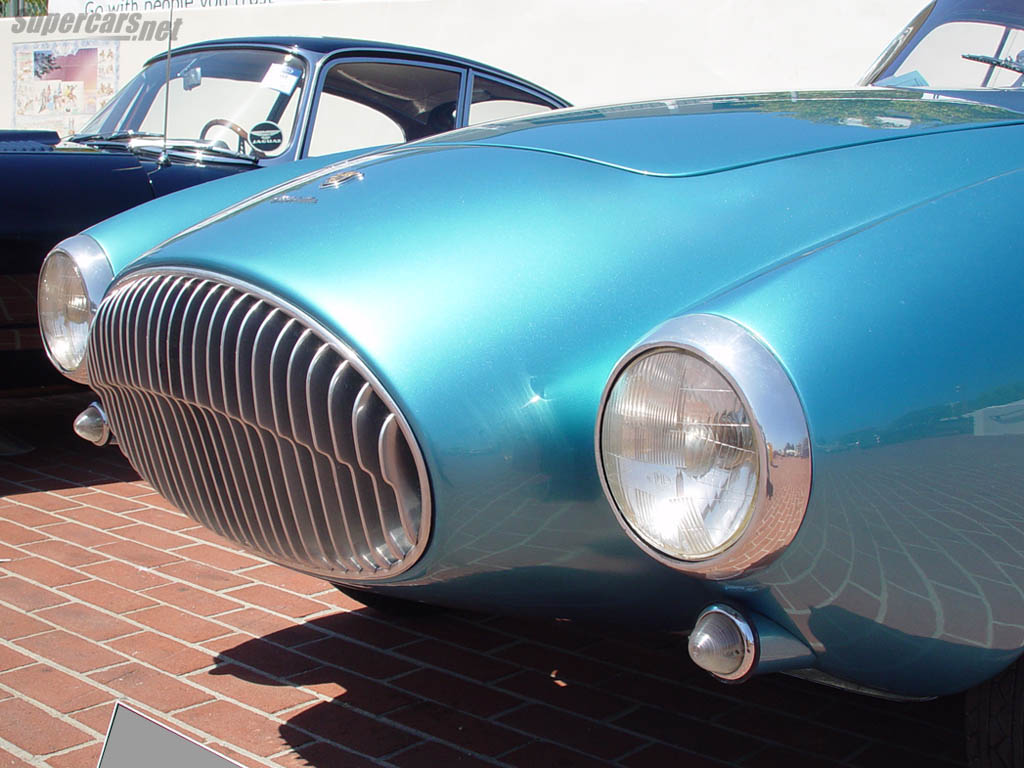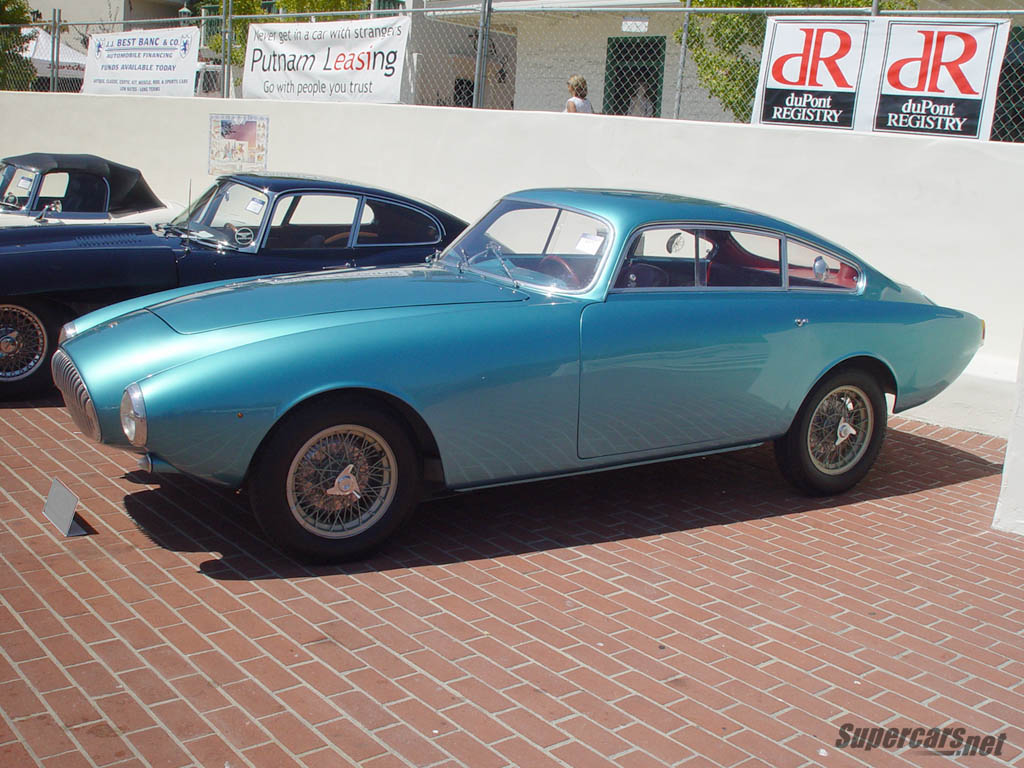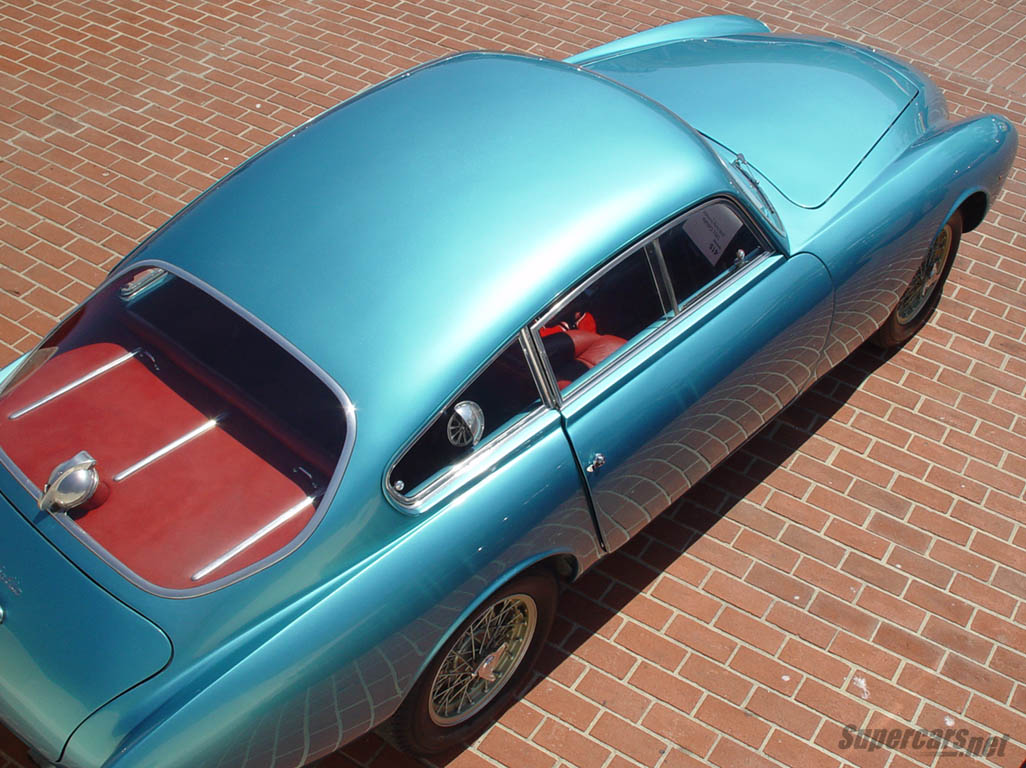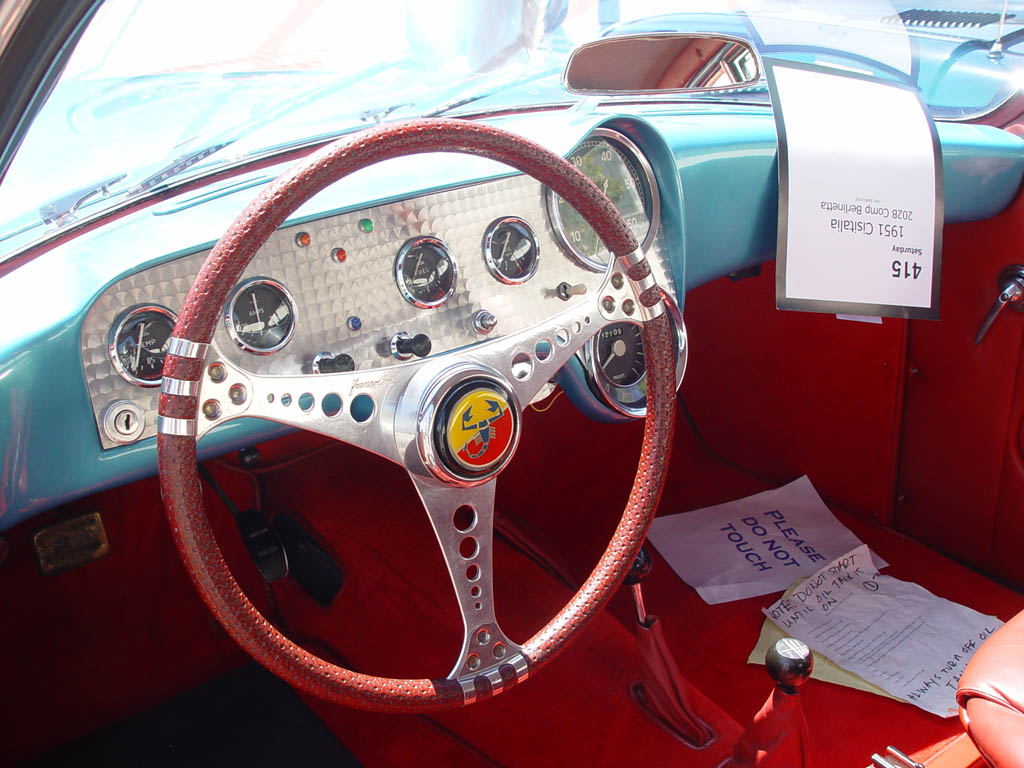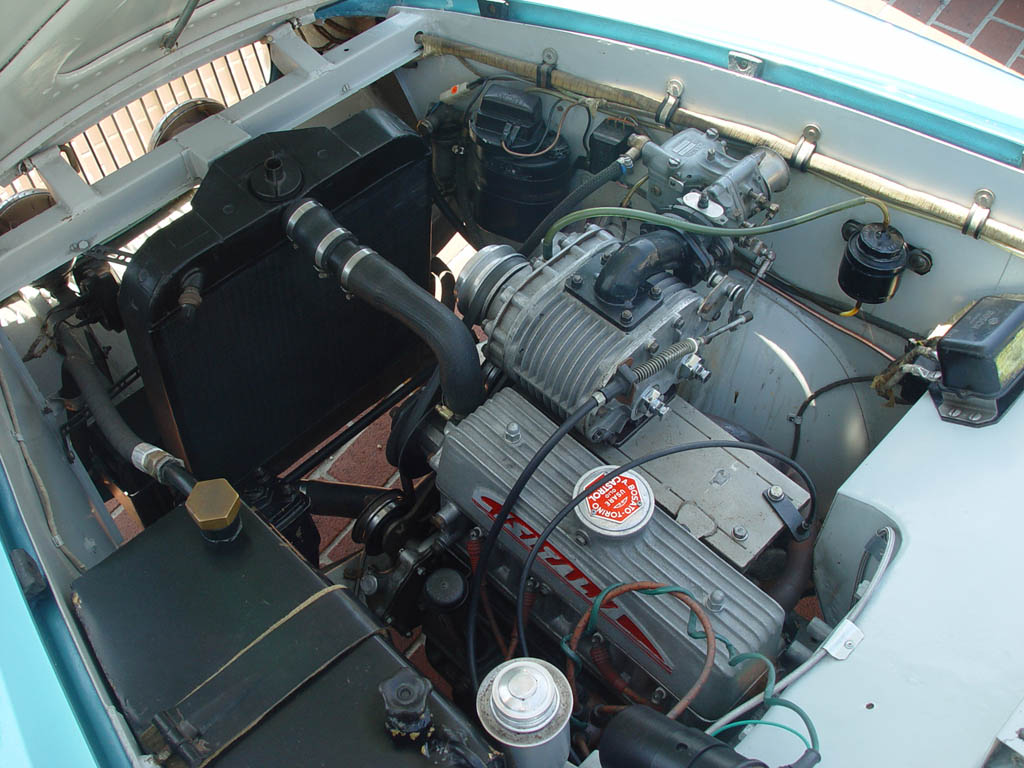1951 Cisitalia 202 Alemano Berlinetta
As a successful businesman and experienced amateur driver, Piero Dusio started Cisitalia, officially known as Consorzio Industriale Sportive Italia. The company employed a wealth of talent to develop limited production sports cars that were based around upgraded Fiat components. Cisitalia’s first product was the D46, a small single seater which used a space frame to support its Fiat 1090cc engine and Fiat 500 suspension.
After producing a several customer D46s, and achieving a debut victory in the Brezzi Cup in Turin, Cisitalia focused on building small passenger car based on the D46, including it’s Fiat components and space frame chassis. All cars were finished as a rolling chassis and bodied by various design houses. Pininfarina was responsible for the first coupe which was implemented by Vignale, albeit with subtle changes.
Since the 202 never made large scale production and all the cars were handmade, the small talented group at Cisitalia, including Carlos Abarth, Dante Giacosa and Giavonni Savonuzzi, made several variants of the 202. Of the more important versions, the SMM Nuvolari Spider was built and named after a class victory at the 1947 Mille Miglia. It is easily identified by its large rear fins, twin windscreens and usual Italian blood red paint scheme.Partly due to expensive construction of the mid-engine, four wheel drive formula one car, designed by Ferry Porsche, Cisitalia went into receivership in 1949 and was sold in 1952. In total, around 200 cars were made which made a large impact on the later marques, including Abarth’s later range of cars.
Chassis 105, the Alemano Special.
Although this Alemano Special shares its designation with several other cars, it has many unique features including a far from uniform body. Designed by Franco Scaglione, and executed by Carrozeria Alemano, this 202 features styling unlike any Cisitalia and definitely flaunts a sporting nature. From it’s prominent, sweeping front wings rearward, Scaglione exercises a consistent design concluded by a converging rear end.
In detail, the #105’s competition intent can be seen with its sliding plexi windows and large quick-flip fuel filler. However, under the hood, a belt driven supercharger and dry sump lubrication system prove this car would be at home on the Mille Miglia. The supercharger, a rare option, added 10 hp to the standard Cisitalia unit.
Attached to the engine is a unique 6-speed semi-automatic transmission which is controlled by no less than three levers by the driver. Housed in an aluminum case, such a transmission would have taken considerable resources to develop and distinguishes this 202 from any other.
History of this car is unclear, although it once housed an oversize gas tank which suggests the car did see some track time. #105 experienced a comprehensive restoration in 1991 which explains why it looks so clean above at the 2003 Monterey Sports Car Auction. During the sale the car had an estimated sale price of $140 000 to $170 000 USD.
Story by Richard Owen for Supercars.net
In Detail
| submitted by | Richard Owen |
| engine | Modified Fiat Inline-4 |
| position | Front Longitudinal |
| aspiration | Natural |
| valvetrain | 2 Valves per Cyl |
| fuel feed | 2 Weber 36DR4SP Carburetors |
| displacement | 1089 cc / 66.5 in³ |
| bore | 68 mm / 2.68 in |
| stroke | 75 mm / 2.95 in |
| power | 52.2 kw / 70 bhp @ 5500 rpm |
| specific output | 64.28 bhp per litre |
| bhp/weight | 92.11 bhp per tonne |
| body / frame | Aluminum Body over Modified Fiat Frame |
| driven wheels | RWD |
| front brakes | Drums |
| f brake size | mm / in |
| rear brakes | Drums |
| r brake size | mm / in |
| steering | Worm & Roller |
| f suspension | Fiat 1100 Wishbones w/Transverse Leaf Springs, Telescopic Dampers |
| r suspension | Fiat 1100 Live Axle w/Transverse Leaf Springs |
| curb weight | 760 kg / 1676 lbs |
| wheelbase | 2400 mm / 94.5 in |
| front track | 1258 mm / 49.5 in |
| rear track | 1247 mm / 49.1 in |
| transmission | 6-Speed Manual |
| gear ratios | :1 |
| top speed | ~160.9 kph / 100.0 mph |


